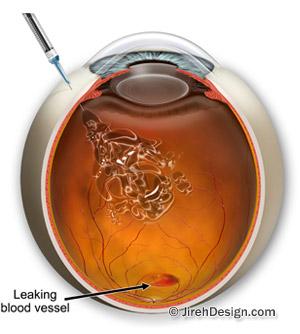Diabetic eye problems – be preventative and proactive
Diabetic eye disease affects approximately 7-10 percent of the population in Tampa Bay and the Clearwater area. Diabetic retinopathy refers […]


Diabetic eye problems – be preventative and proactive
Diabetic eye disease affects approximately 7-10 percent of the population in Tampa Bay and the Clearwater area. Diabetic retinopathy refers […]
Diabetic eye disease affects approximately 7-10 percent of the population in Tampa Bay and the Clearwater area.
Diabetic retinopathy refers to a group of eye problems that people with diabetes may face as a complication of the disease. Diabetic eye complications can cause severe decrease in eyesight or even blindness.

Eye problems from diabetic eye disease aren’t just limited to diabetic retinopathy – cataracts and glaucoma can occur as a complication of diabetes. Anyone with diabetes can develop retinopathy. In fact, nearly half of all people with diabetes will develop some degree of diabetic retinopathy during their lifetime. The longer someone has diabetes, the more likely he or she will get diabetic retinopathy.
Often, there are no symptoms in the early stages of this painless disease. Eyesight may not change until the disease becomes severe. Blurred vision may occur when the macula on the back of the eye swells from the leaking fluid. This condition is called macular edema. If new vessels have grown on the surface of the retina, they can bleed into the eye, blocking vision.

Recently, there have been major advancements in treatment — anti-VEGF drugs were approved for the treatment of diabetic macular edema. These drugs work by blocking the formation of abnormal new blood vessel that leak and cause edema in the layers of the retina. This approach, along with timely laser treatment has made the management of diabetic retinopathy significantly more successful.
Early detection and timely treatment is paramount. Close monitoring with timely intervention can virtually eliminate blindness in patients with this disease. Perhaps due to fear or denial, some wait until they’re losing vision to address the problem — this can lead to permanent damage and accounts for many of the cases that have less successful outcomes. So, if you have diabetes, make sure you get a dilated eye exam at least once a year.






